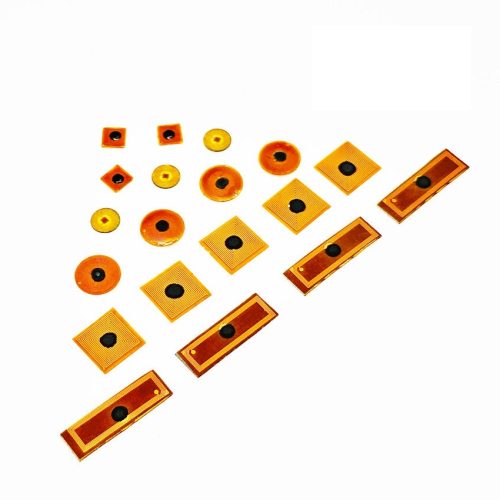HMC1056LP4BE Overview
The HMC1056LP4BE is a high-performance, low-noise amplifier designed for RF and microwave signal applications. It operates efficiently within a broad frequency range, providing excellent gain and noise figure characteristics, making it ideal for sensitive signal amplification. This amplifier supports integration into complex systems requiring compact, reliable, and low-power components. Its robust design ensures consistent performance in demanding industrial environments. Available in a compact 4-lead package, the device simplifies board layout and thermal management. For more detailed product information, visit IC Manufacturer.
HMC1056LP4BE Technical Specifications
| Parameter | Specification |
|---|---|
| Frequency Range | 0.5 to 3.0 GHz |
| Gain | 15 dB typical |
| Noise Figure | 1.5 dB maximum |
| Output Power at 1 dB Compression | +12 dBm typical |
| Supply Voltage | +5 V |
| Supply Current | 22 mA typical |
| Operating Temperature Range | -40??C to +85??C |
| Package Type | Leadless 4-lead Plastic Package (LP4) |
HMC1056LP4BE Key Features
- Wide Frequency Range: Covers 0.5 to 3.0 GHz, enabling flexible use across multiple RF and microwave bands.
- Low Noise Figure: Maintains noise figure below 1.5 dB for improved signal clarity and sensitivity in receiver front-end circuits.
- High Gain: Provides a typical gain of 15 dB, ensuring sufficient signal amplification with minimal distortion.
- Low Current Consumption: Draws only 22 mA at 5 V supply, optimizing power efficiency for battery-powered or energy-sensitive applications.
- Compact LP4 Package: Facilitates easy PCB integration and effective thermal management in dense system layouts.
- Robust Operating Temperature Range: Supports industrial temperature range from -40??C to +85??C, suitable for harsh environments.
- Output Power Handling: Capable of delivering +12 dBm at 1 dB compression point, suitable for linear amplification needs.
HMC1056LP4BE Advantages vs Typical Alternatives
This device offers a balanced combination of low noise figure and high gain, outperforming many standard amplifiers in sensitivity and signal integrity. Its low current consumption enhances energy efficiency, while the compact LP4 package simplifies integration. Compared to typical alternatives, it supports wider frequency coverage with stable performance across temperature extremes, making it reliable for industrial and communication system designs.
🔥 Best-Selling Products
Typical Applications
- RF and microwave receiver front-end amplification, where low noise and high linearity are critical for signal detection and processing.
- Wireless communication systems requiring compact, low-power amplifiers for base stations and repeaters.
- Test and measurement equipment that demands precise signal gain and low distortion.
- Industrial and military radar systems operating in harsh environments with wide temperature variations.
HMC1056LP4BE Brand Info
The HMC1056LP4BE is part of a series of high-performance RF amplifiers renowned for their reliability and efficiency. Designed with modern semiconductor processes, this product reflects the brand??s commitment to delivering precision-engineered components optimized for demanding industrial and communication applications. The device??s package design and electrical characteristics align with industry standards, facilitating seamless integration into diverse system architectures.
FAQ
What is the typical operating frequency range of the HMC1056LP4BE?
The amplifier operates efficiently from 0.5 GHz up to 3.0 GHz, making it suitable for a wide range of RF and microwave applications including communication and radar systems.
🌟 Featured Products

“Buy MAX9312ECJ+ Precision Voltage Comparator in DIP Package for Reliable Performance”

0339-671-TLM-E Model – High-Performance TLM-E Package for Enhanced Functionality

1-1415898-4 Connector Housing, Electrical Wire-to-Board, Receptacle, Packaged

1-1462039-7 Electrical Connector, PCB Mount, Through-Hole, 2-Pin Header Socket
How does the noise figure impact performance in this amplifier?
A low noise figure of 1.5 dB maximum helps minimize signal degradation, improving overall sensitivity and enabling clearer signal reception in front





